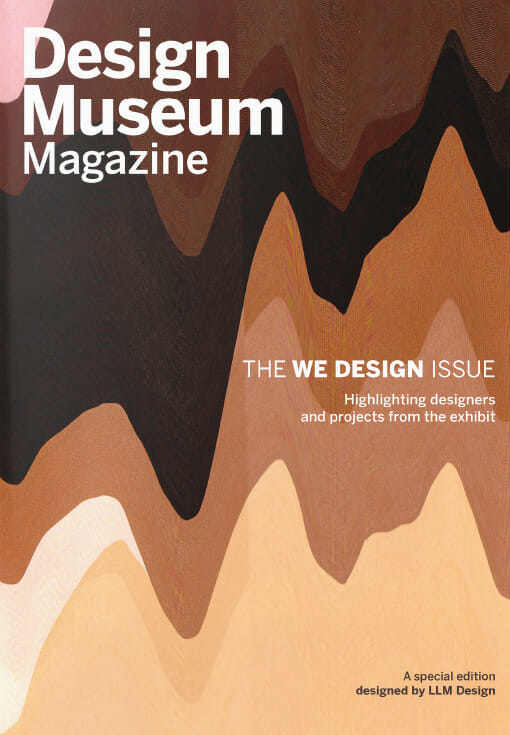Public Art and Community
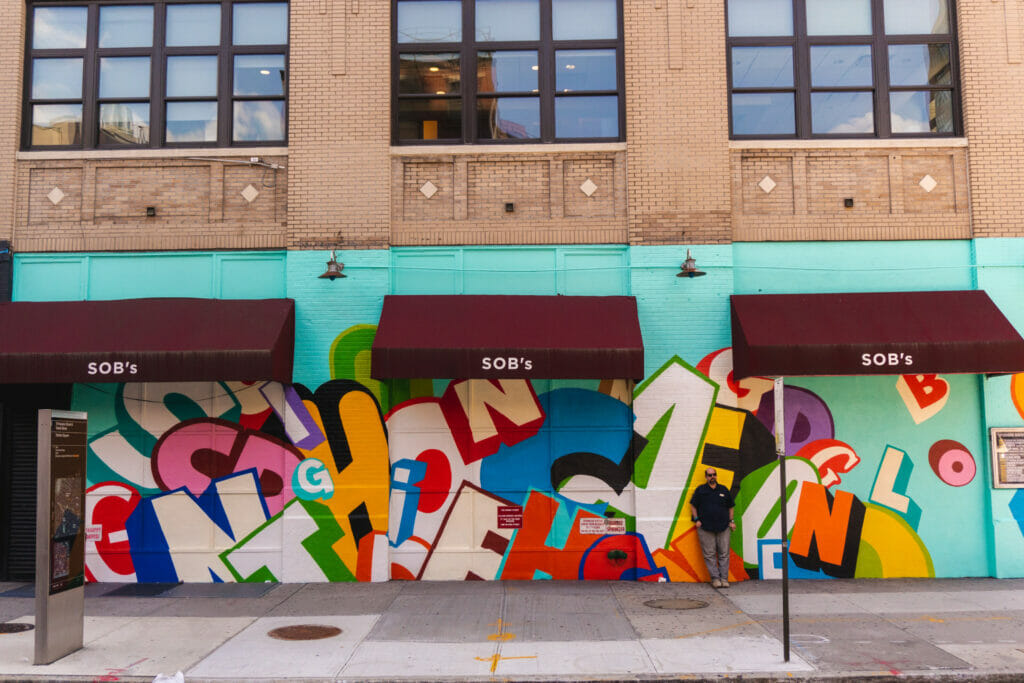
Game Inside the Game, 2019. Greg Lamarche’s wall painting at 200 Varick Street features his signature large-scale, vintage letterforms to create an abstract array of movement, tangled letters, and color. Presented by the Hudson Square BID. Photo credit: Kellie Rogers.
By Kendra Roberts, Co-Founder, Common Ground Arts
As curators, we think about art all the time: where we can put it (everywhere!), whose work is appropriate for a certain space, and most importantly, how we can design and craft a meaningful connection between that artwork and a specific community. We lean into questions like, what is the history of this place? Who lives, works, commutes, and visits this space? Who or what has been a primary focus and should that perspective be shifted? What current events or issues are directly tied to this place and its people? How can this artwork be seen and/or offer a new point of view? From there we research, identify, and recommend artists whose work seeks to answer many, if not all, of those questions, often asking their own. We see ourselves as matchmakers—matching artists’ voices to neighborhood, community, brand and/or company missions. We aim to design strategic programming around the placement of conscious, careful, community based public art experiences.
There is extensive research on the importance of art within our society. Therefore, we believe that public art is an integral part of our lives, and many of us are privileged to come into direct contact with a designed object or environment every day. Thoughtful, well-placed public art has the power to connect people and create a stronger sense of place when the work is intentionally inviting, engaging, and site-specific. Public art has the ability to bring people together by building understanding, dignity, and respect between diverse groups, and can be a powerful instrument of cultural identity expression, as well as a tool for protest and resistance. Public spaces offering safety, as well as a sense of belonging and ownership, establish more meaningful connections to each place and its people. Experiencing public art alone or collectively allows us to recognize our differences and appreciate our common humanity.
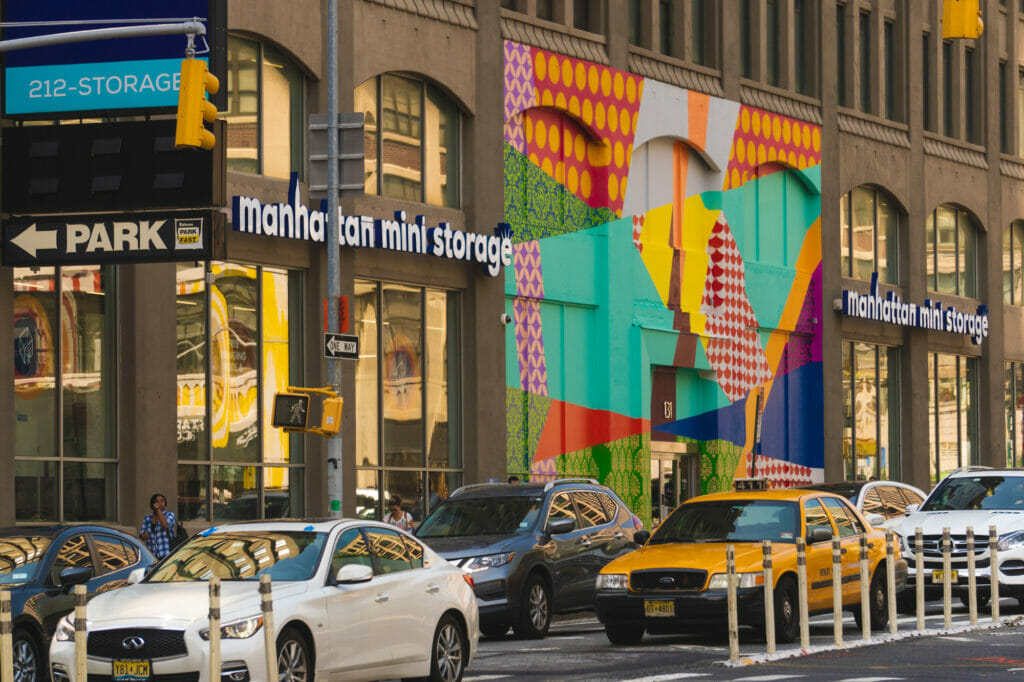
Keep chopping (dinosaur jr.), 2019. Brooklyn based artist Hellbent delivers a hand-painted mural on the façade of 131 Varick Street using his unique designs of interwoven color blocks and stenciled patterns drawn from classic fabric and wallpaper motifs. Presented by the Hudson Square BID. Photo credit: Kellie Rogers.
Today our society is reconsidering what histories have been amplified (or erased), and we are greatly inspired by projects facilitating strong connections to updated histories, place, and space. For instance, “Prototypes,” presented by Converge 45 in Portland, Oregon, an idea lab and exhibition, is centered around these two questions: “What is an appropriate monument or memorial for this time and place? What monument or memorial would you want in your neighborhood?” Over 30 Oregon artists responded with artworks, projects, ideas and proposals that engage in the national reckoning of our historical markers that compound racial injustice and social inequity. The responses are varied in their depth and detail, some humorous and others stark, in their defiance of both perceived and real threats to single bodies and whole communities. This is a powerful new model for public monuments, memorials, and public art installations that we believe can and should be adopted across the board. How will this model change the public art in our neighborhoods? What vantage points and lessons would be learned and shared? Why are the stories being told within these artworks important? What or who is being served?
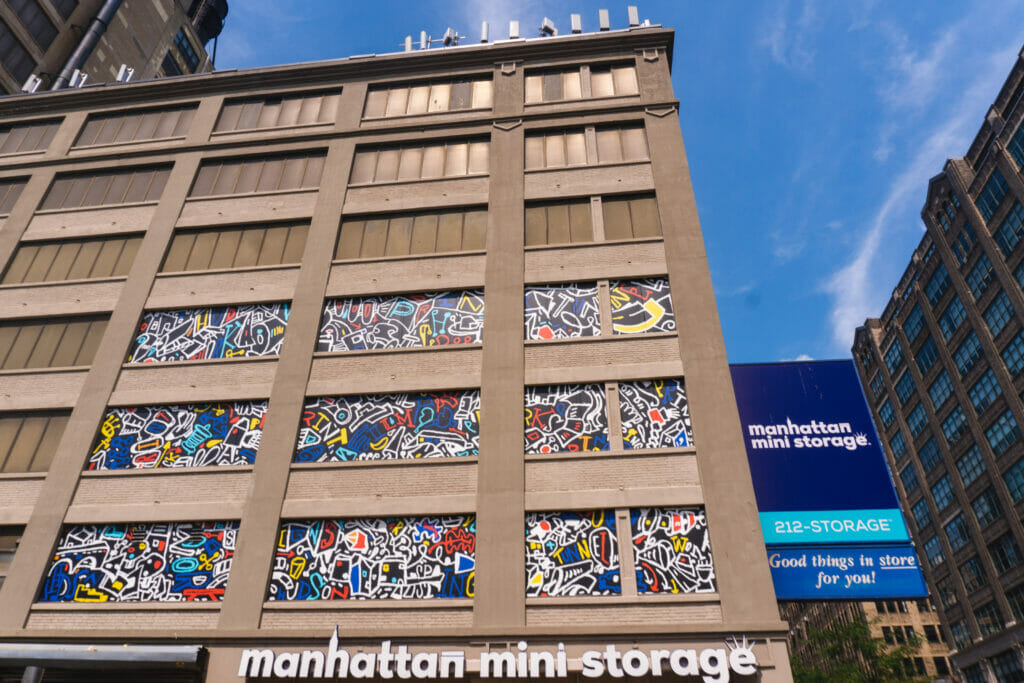
Katie Merz, known for her use of personal pictograms and hieroglyphs drawn from stories, conversations, and research, creates two unique printed works for 161 Varick (Hudson Square Hieroglyphs, 2019) and 181 Varick (Varick Street Verticals, 2019) using playful pictograms that reflect both the history and the present moment of the neighborhood. Presented by the Hudson Square BID. Photo credit: Kellie Rogers.
Our purpose, as curators, is to transform urban environments through the power of art. How do we do this? By asking questions and listening intently to those answers, which oftentimes lead to more questions, we foster purposeful partnerships through dialogue, research, exploration, and collaboration. Informed by those discussions and findings, we design artist-driven ideas and solutions for each distinct space and place. One recent example of our work features a neighborhood business improvement district in Manhattan that historically was the center of the print and printmaking industry. It is now home to more modern creative companies and businesses. The selected artists for this project all use bold colors, text, and patterns in unique ways. Designed for specific buildings and public spaces along a busy street, these dynamic and colorful artworks invite daily inhabitants and visitors to explore the historic district now infused with new vitality.
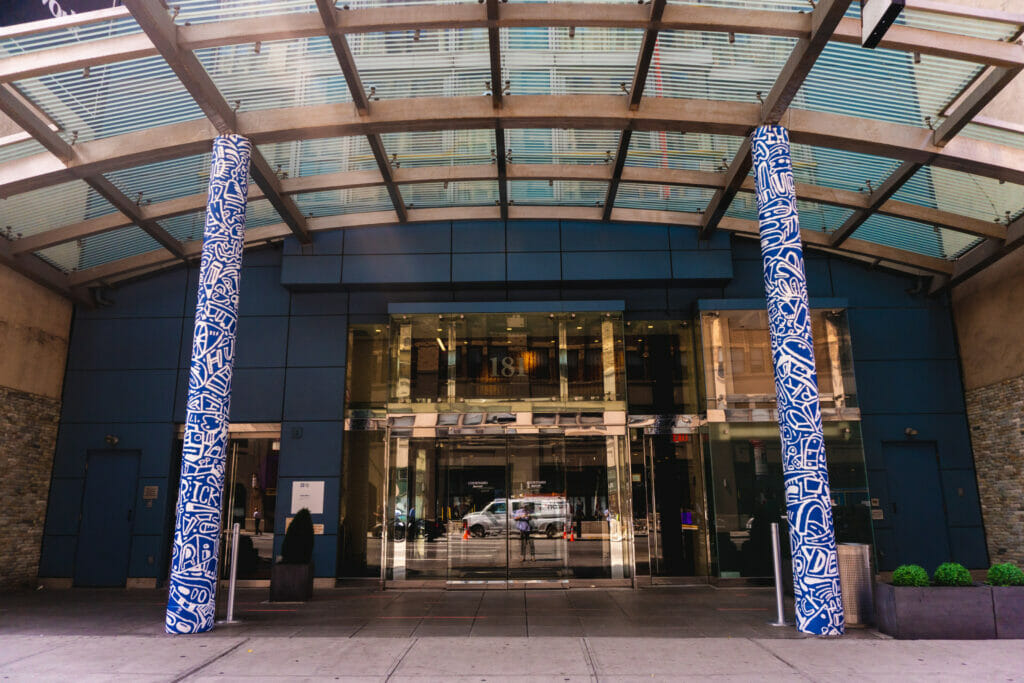
Another example highlights a site-specific project for a corporate client seeking connection with the neighborhood through the artwork. The chosen artist was interested in the history of stained glass and identified a 19th-century craftsman known for his work throughout the area. She photographed several existing windows and created her own digital versions, using the original themes in different ways and adjusting the traditional color palette. These digitally printed vinyl artworks were installed along the large marble lobby walls and thus created the effect of illuminated stained-glass windows, providing a unique opportunity for viewers to experience the artwork at eye level. Both projects present artwork that connects directly to the modern history of each place. In this way, the artwork is not merely decorative, but anchors current community members and broader audiences to those historical moments.
Additionally, we are working on a public art project in a highly designed, newly created, multi-section urban park. The name of the park is significant as it is dedicated to a historical figure known as a champion for her work in the women’s rights movement and other social causes. With this in mind, we are determined to feature female artists in this inaugural outdoor exhibition. One of our tasks is to intentionally draw new visitors further into this new park during the evening hours in the winter months, which is not typically a time one wants to frolic in a park due to the cold. Since the environment will be dark early in the evenings during the bleakest part of the year, we look to a lighting designer to illuminate the artwork in a unique way that will engage audiences once the sun has set. Our research also involves identifying artists with experience in outdoor installations and who tell their individual or collective stories connected to nature. Many of us now appreciate our public green spaces in different ways, so we are engaging with artists who foster fresh perspectives and motivate new relationships between humans and nature. Several of these artists are intrigued with the notion that their work will degrade over time in direct opposition to the winter months leading into the spring season of renewal and rebirth.
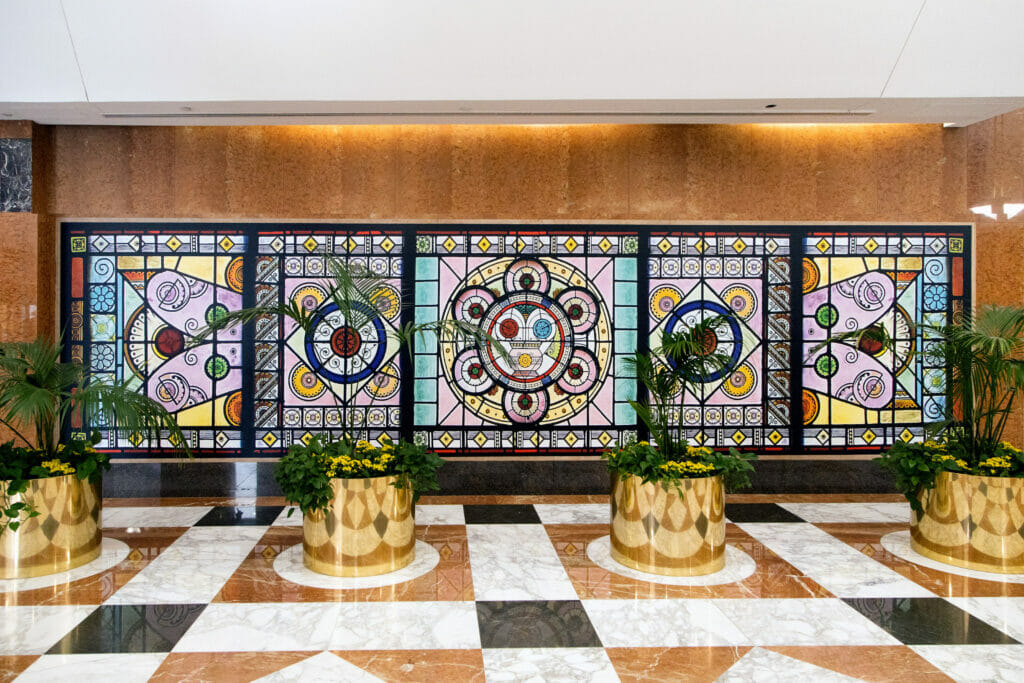
Illumination, 2020. Julia Whitney Barnes created this multifaceted large-scale installation inspired by the 19th century stained glass artist Charles Booth. Presented by Arts Brookfield at One Pierrepont Plaza in Brooklyn. Photo credit: Sean Hemmerle.
Public art has saved us during this pandemic and offers vital benefits, including cultural awareness and identity, community and individual wellness, and greater productivity and freedom of movement. Art, in all of its forms, is essential for any civilized society. We are healthier when we are less isolated and more connected to one another. It is in this spirit that we collaborate and dream about new ways to facilitate how audiences can engage with and discover the public art around them. What are the stories being depicted through the public art in your community? What stories do you want to be told?
